What It Was Like at the Women’s March in Washington, DC
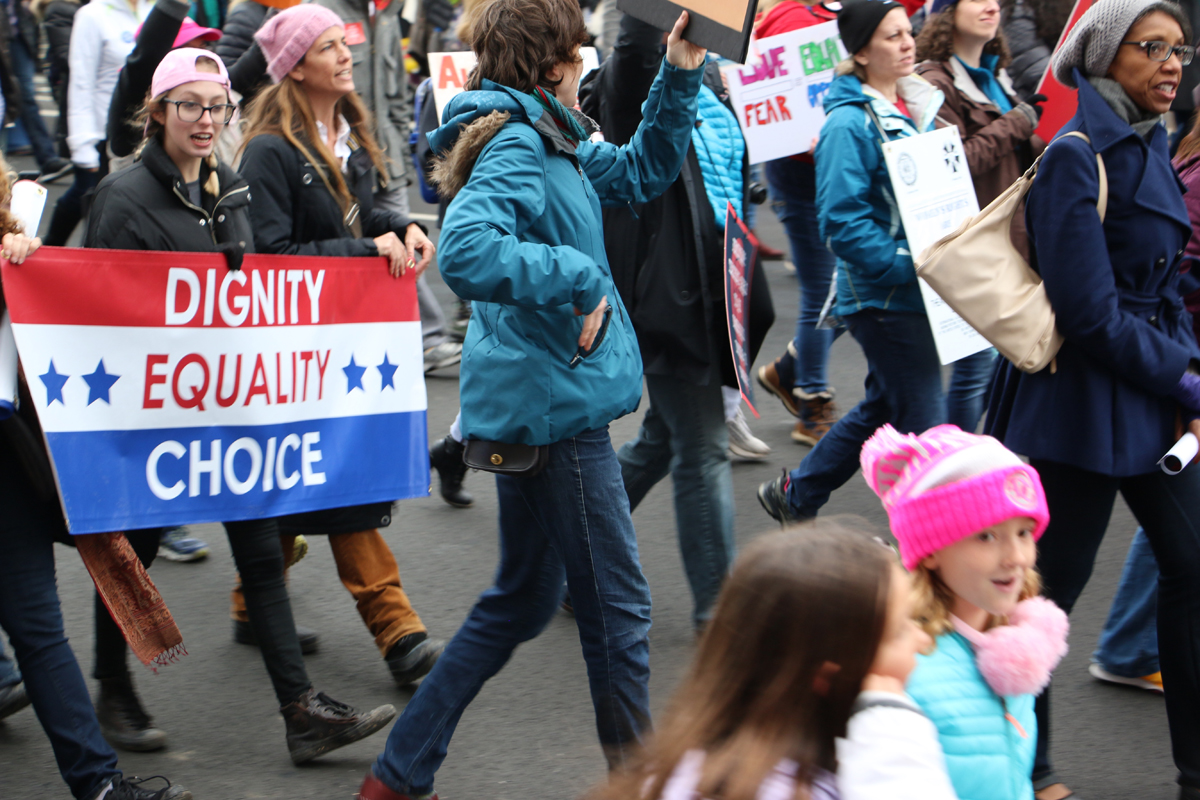
Image by Lisa Weidenfeld
The pink hats start appearing in New Jersey, which is around the time the lines for the ladies’ room at rest stops start to get noticeably longer. And by the time you hit the Metro on this chilly, misty Saturday in January in Washington, DC, it’s a solid stream of women carting signs and grinning at each other in recognition.
On the train, there’s a saturation level of politeness, as everyone tries to find the person who most deserves each seat in the cramped cars. Is it the older woman with the cane, or is it the young dad holding a baby whose onesie reads “The Future Is Female”? In the row behind them sit a pair of women, both donning Mt. Nasty shirts, with Hillary Clinton, Ruth Bader Ginsburg, Elizabeth Warren, and Michelle Obama grinning out in a Mount Rushmore of lady icons.
Anyone confused about where the march is located can follow the path of people churning toward the mall. It’s a ceaseless current of humanity that swells and swells as it approaches the rally. It becomes impossible to cross the street with any degree of ease. And everyone has signs. Funny signs, angry signs, painted signs, printed signs. They will hold those signs for hours, and hours, through a rally that stretches from mid morning to mid afternoon, and they will still be holding them once the crowd finally surges into the street for the actual marching portion of the day.
The very lucky find themselves somewhere in earshot of the speakers and eyeshot of the screens before the march begins, and enjoy speeches from a range of speakers, while the rest jockey for position in a drifting whirlpool of humanity all asking each other which direction the stage is in. Occasionally words can be discerned over the roar of the crowds and the hum of the news vans. “Gloria Steinem” announces a woman excitedly, and the crowd “wooooos” mightily. Steinem talks for a few minutes, and the phrases “inability to distinguish between fantasy and reality” and “we know walls don’t work” are clear.
Beyond that, various other phrases are repeated over and over: “reproductive rights”, “immigration,” “LGBTQ.” At one point filmmaker Michael Moore is onscreen, but with the shifting crowds, his audio comes through sounding like an angrier Swedish chef.
And then the march finally happens, a torrent of women and an outpouring of angry, excited emotion. There are the usual chants: “Fired up!”, “Ready to go!”, and then the more specific chants: “Hands too small to build a wall!”, “We will not go away, welcome to your first day!”, “We are the popular vote!” The signs also range from the expected (“I’m with her,” with arrows pointing all around) to the slightly more nontraditional (“We Love PP” next to the Planned Parenthood logo on one side, “He Likes Pee Pee” on the other).
The crowd pours through the street, sometimes forced to stop because of the sheer volume of people caused by extra conduits from the rally. A swing by the Newseum inspires people to chant “Free Press.” The parade route swings by the Trump International Hotel, and the crowd boos and yells “Shame” over and over again.
It is impossible to see all of it. There are hundreds of thousands of people. There are young women and old women, women of every race, men alone, men with women, men together. And when at last they have reached the end of their marching capacity, and everyone is filtering off of the Metro again toward buses and carpools, they still have it in them to cheer once more each time a new train appears and lets off more protesters.
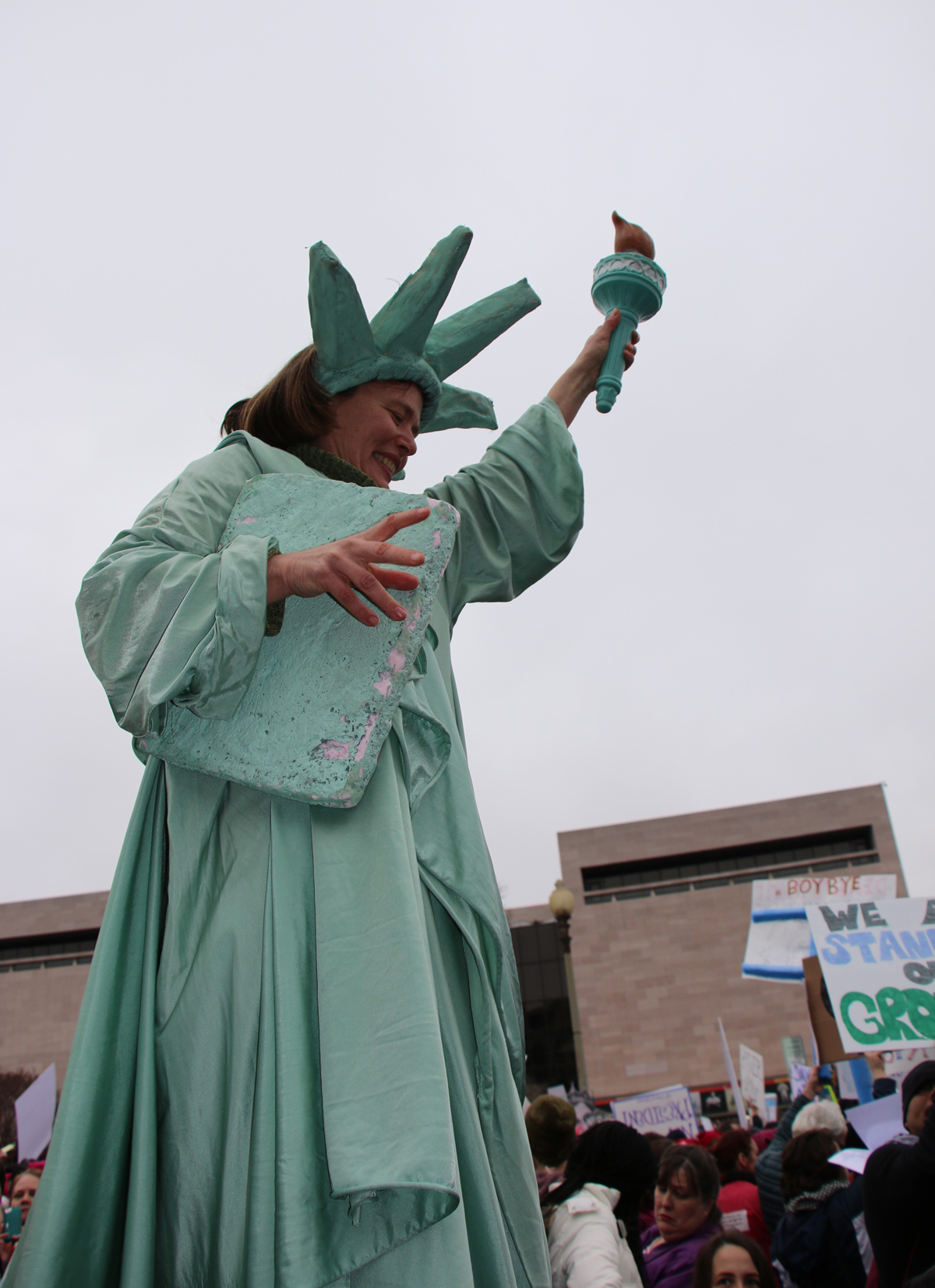
Image by Lisa Weidenfeld

Image by Lisa Weidenfeld
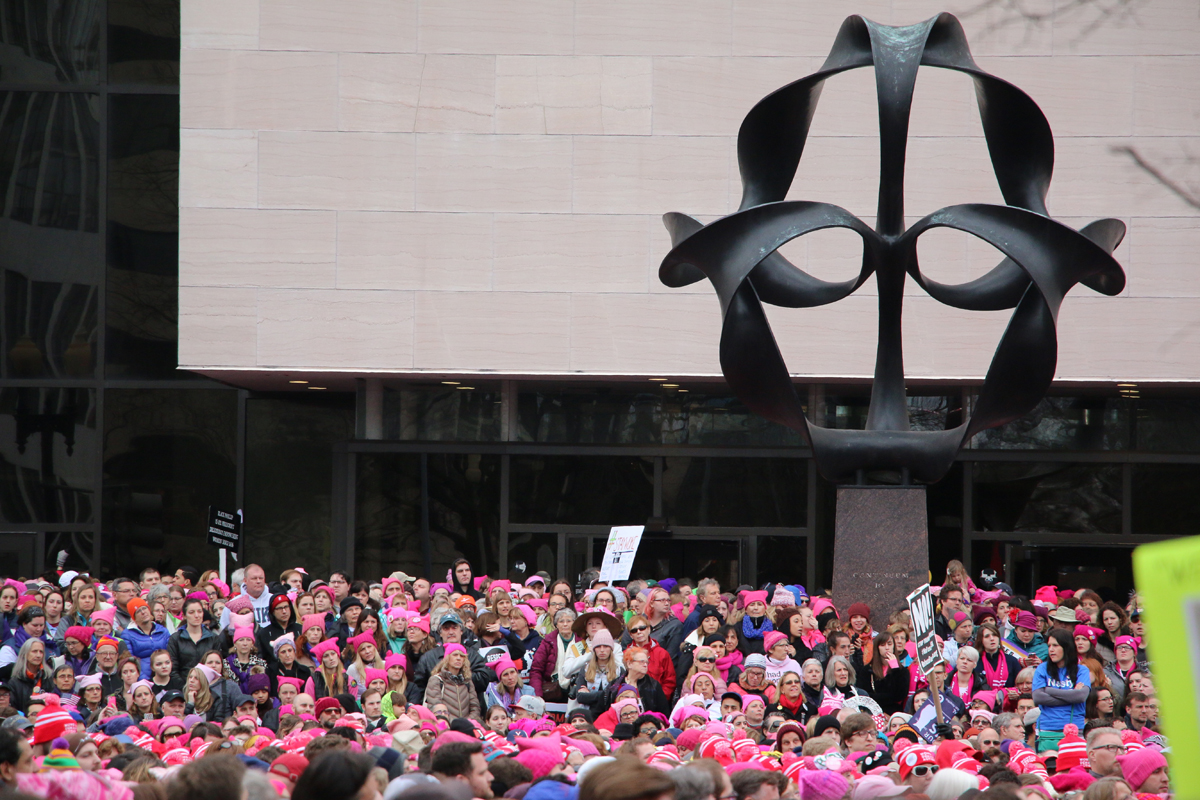
Image by Lisa Weidenfeld
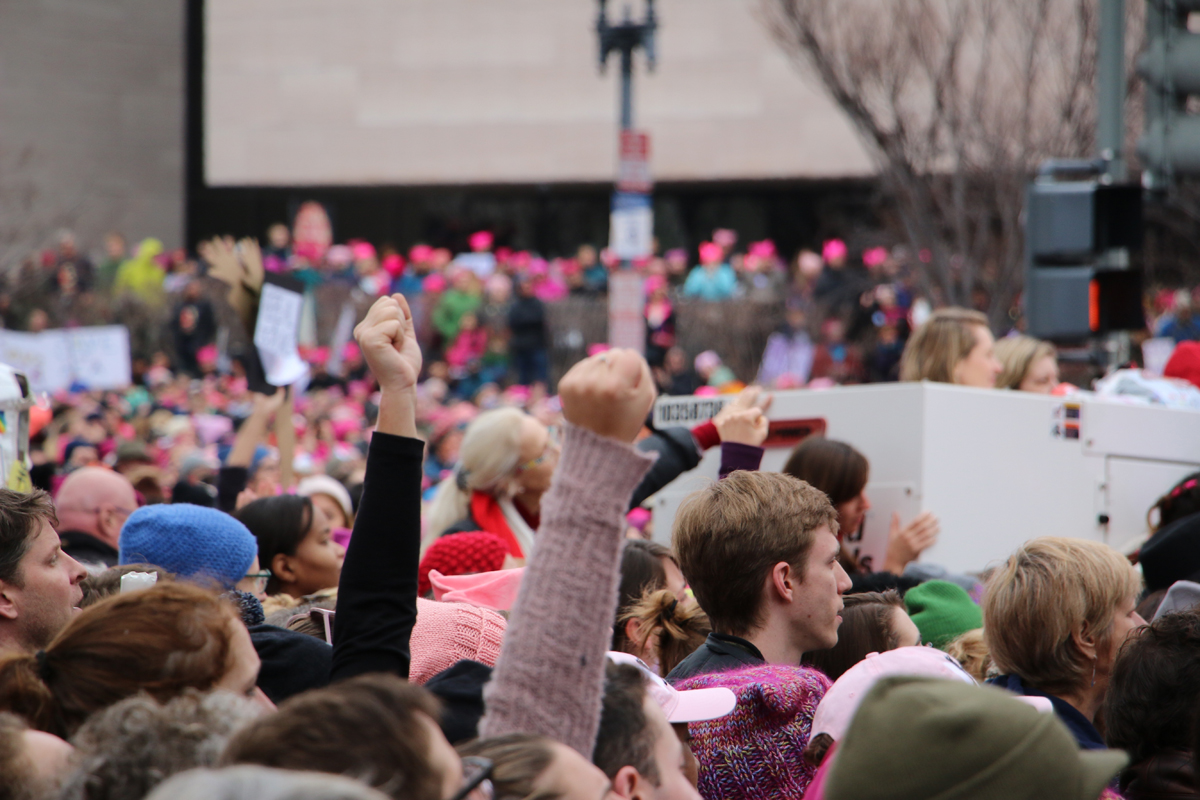
Image by Lisa Weidenfeld
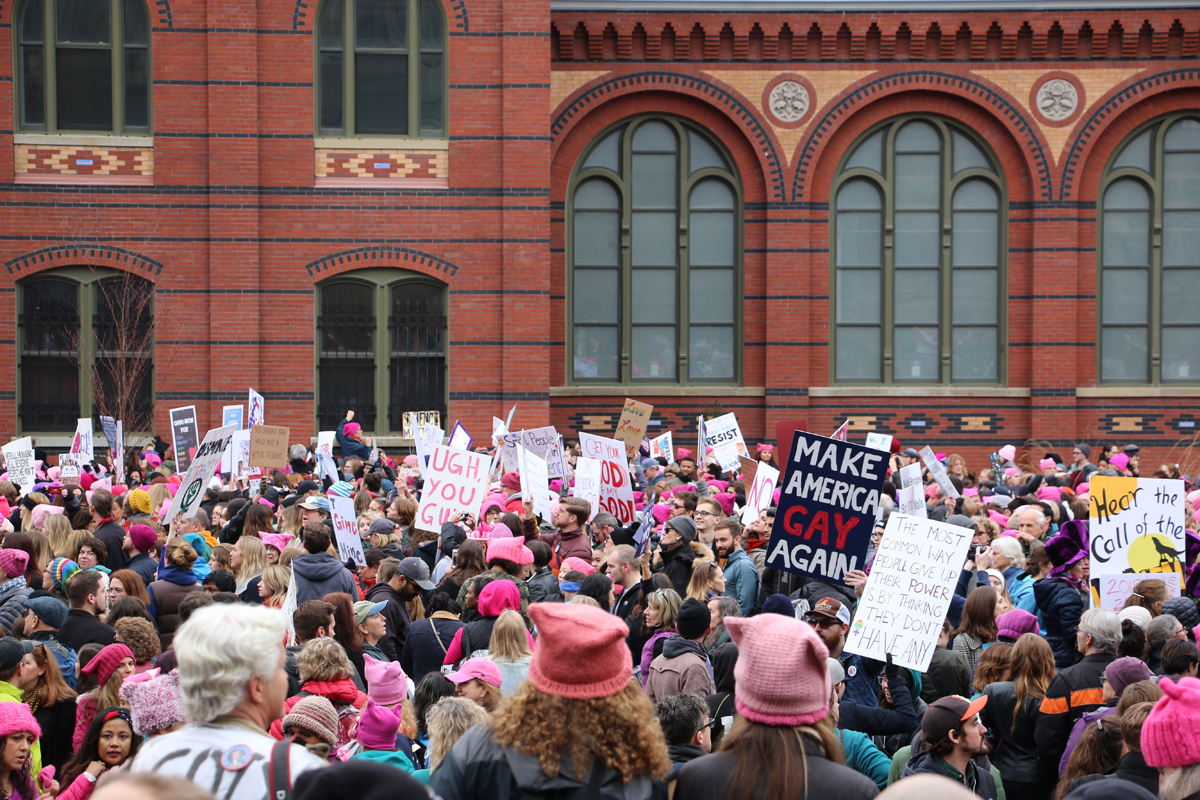
Image by Lisa Weidenfeld
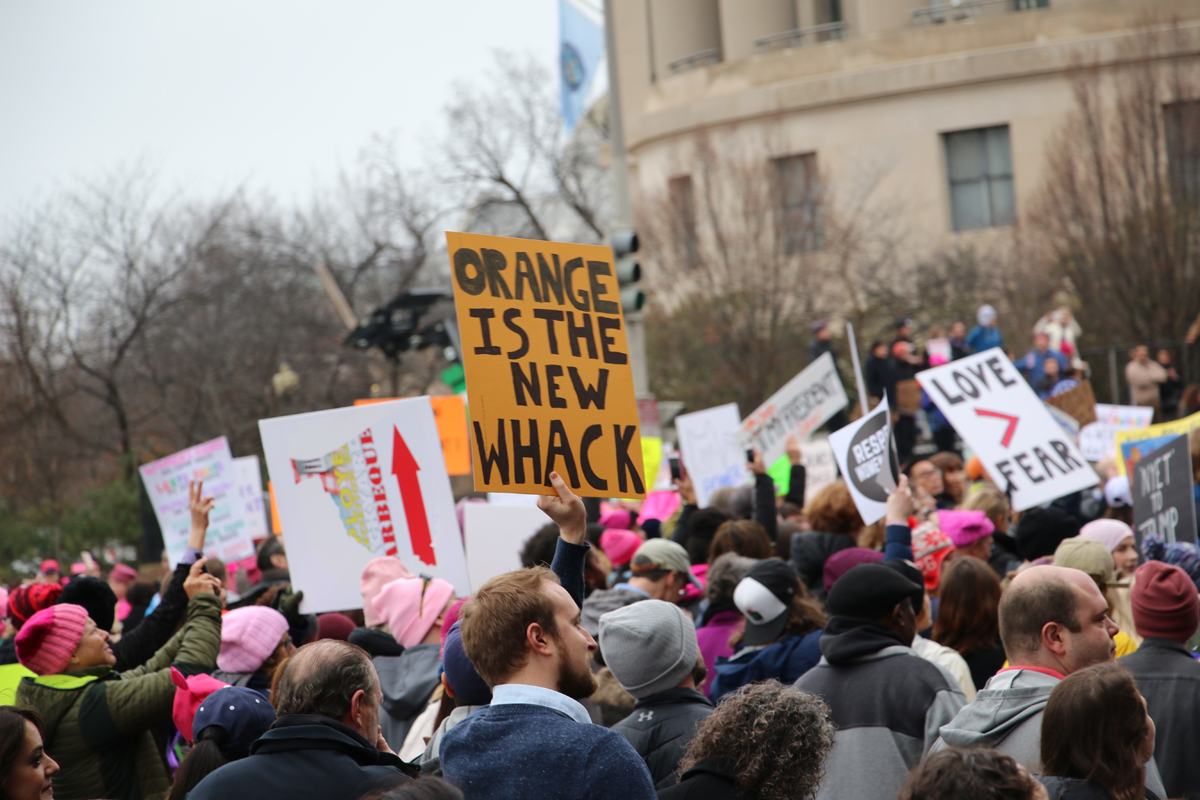
Image by Lisa Weidenfeld
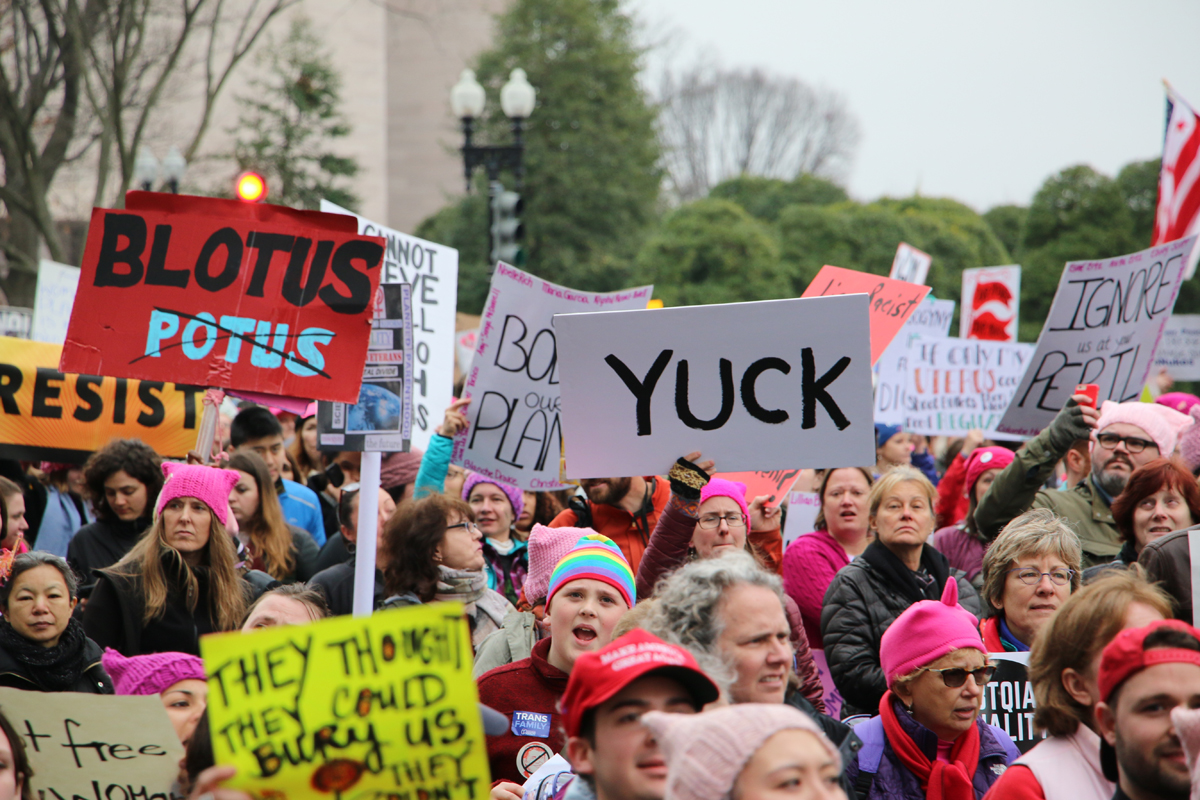
Image by Lisa Weidenfeld
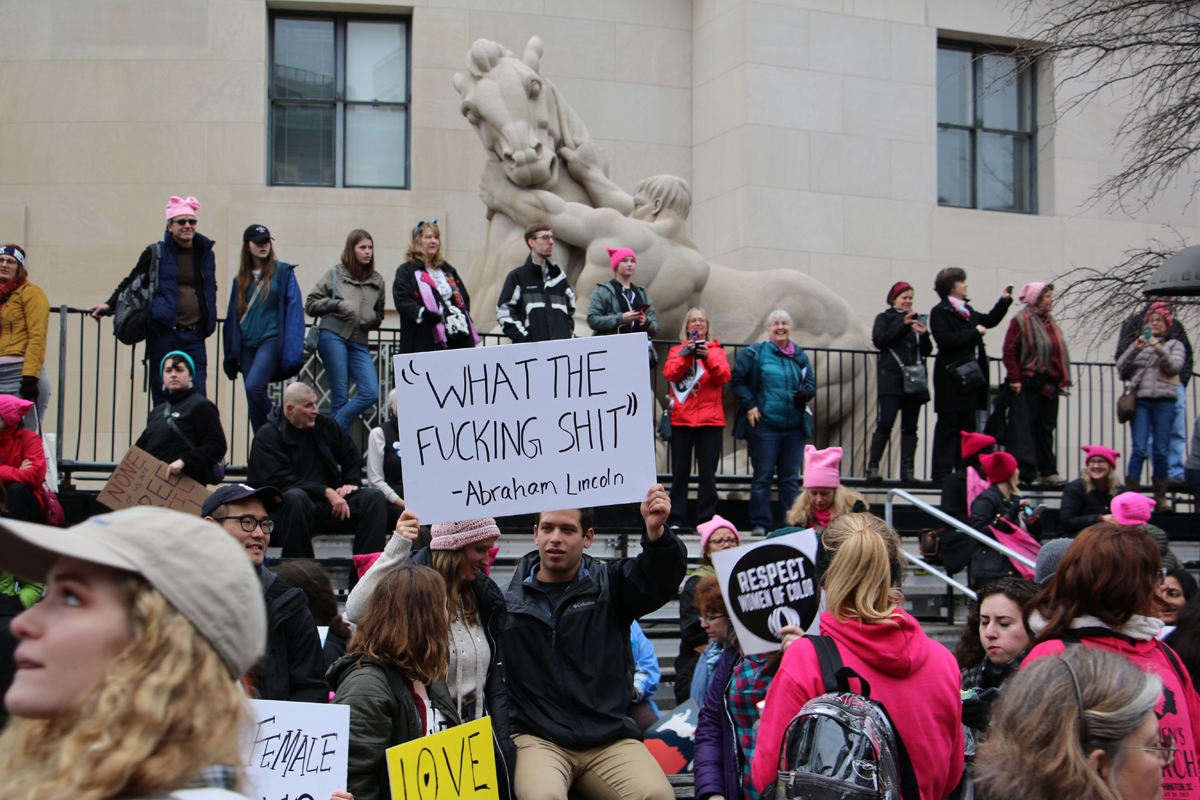
Image by Lisa Weidenfeld
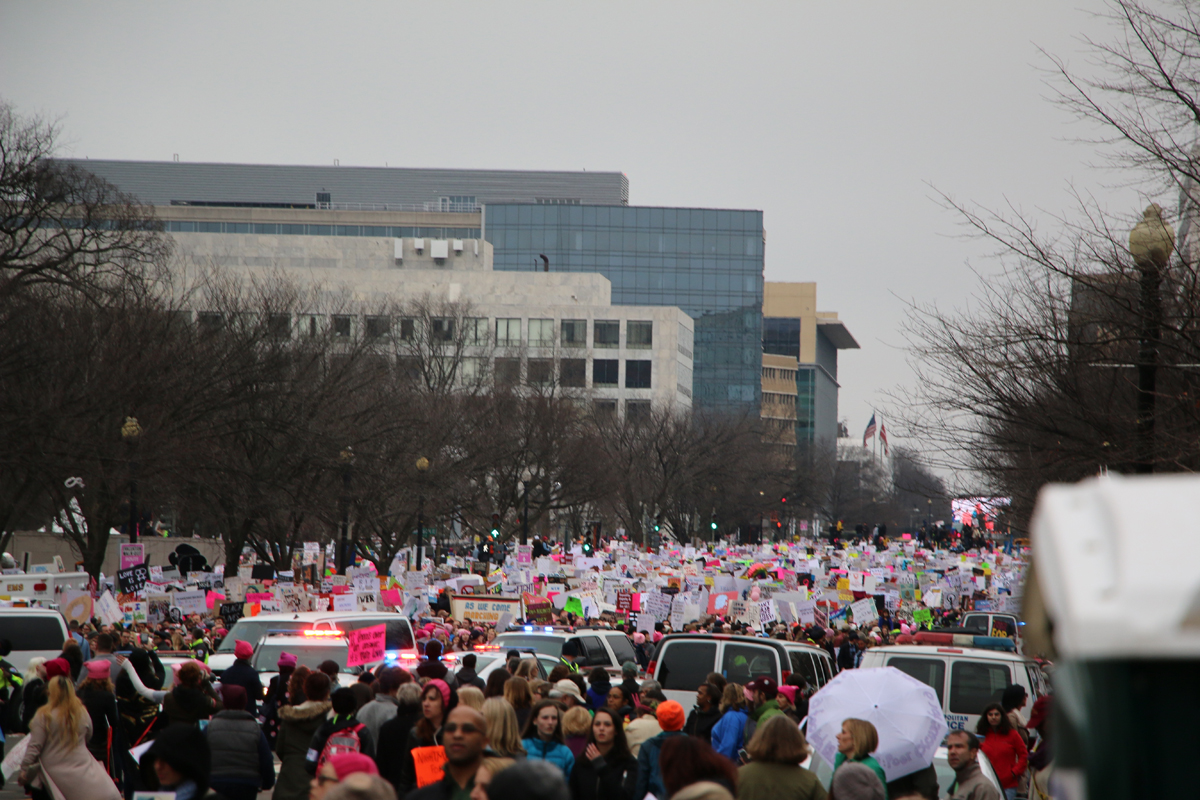
Image by Lisa Weidenfeld
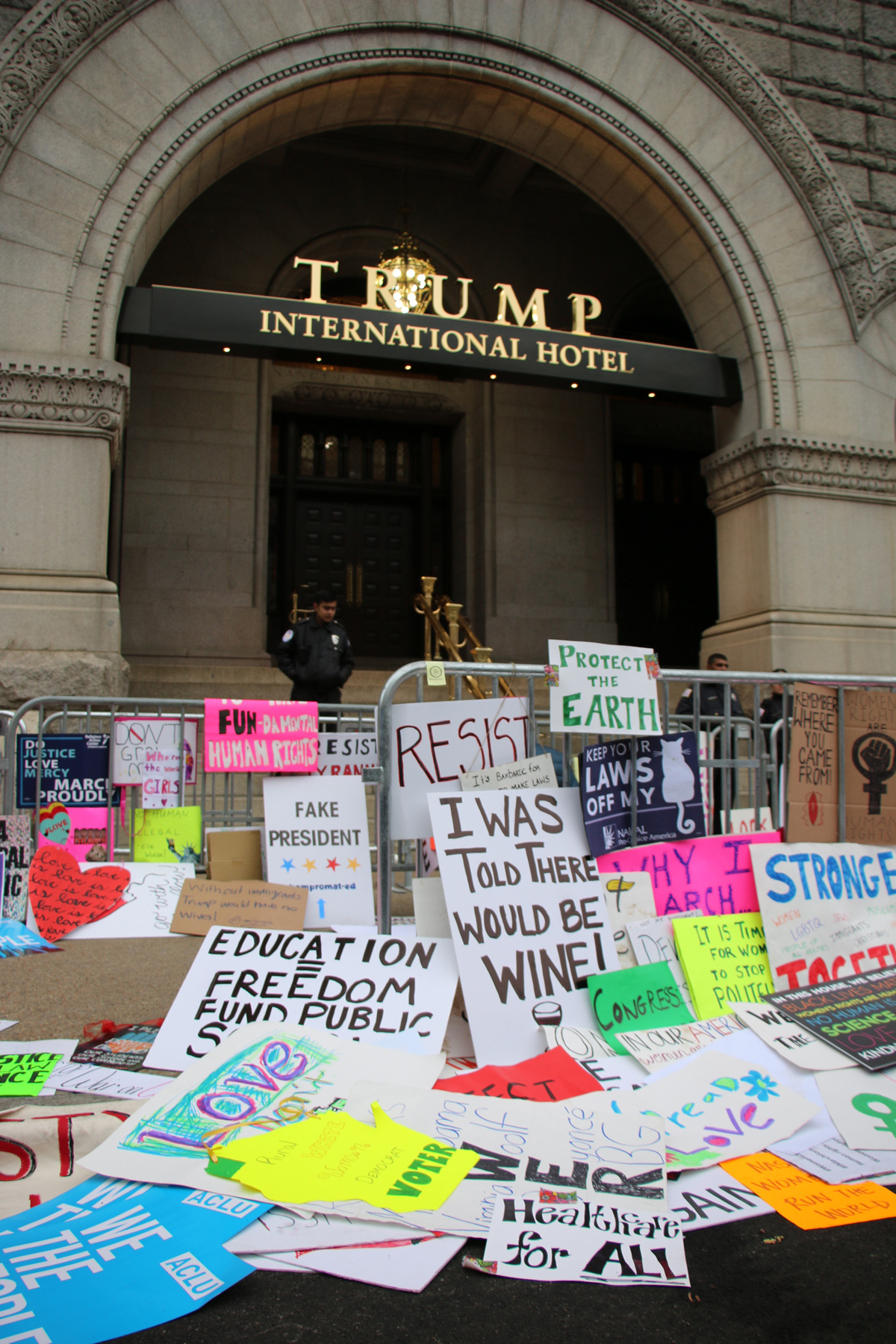
Image by Lisa Weidenfeld

